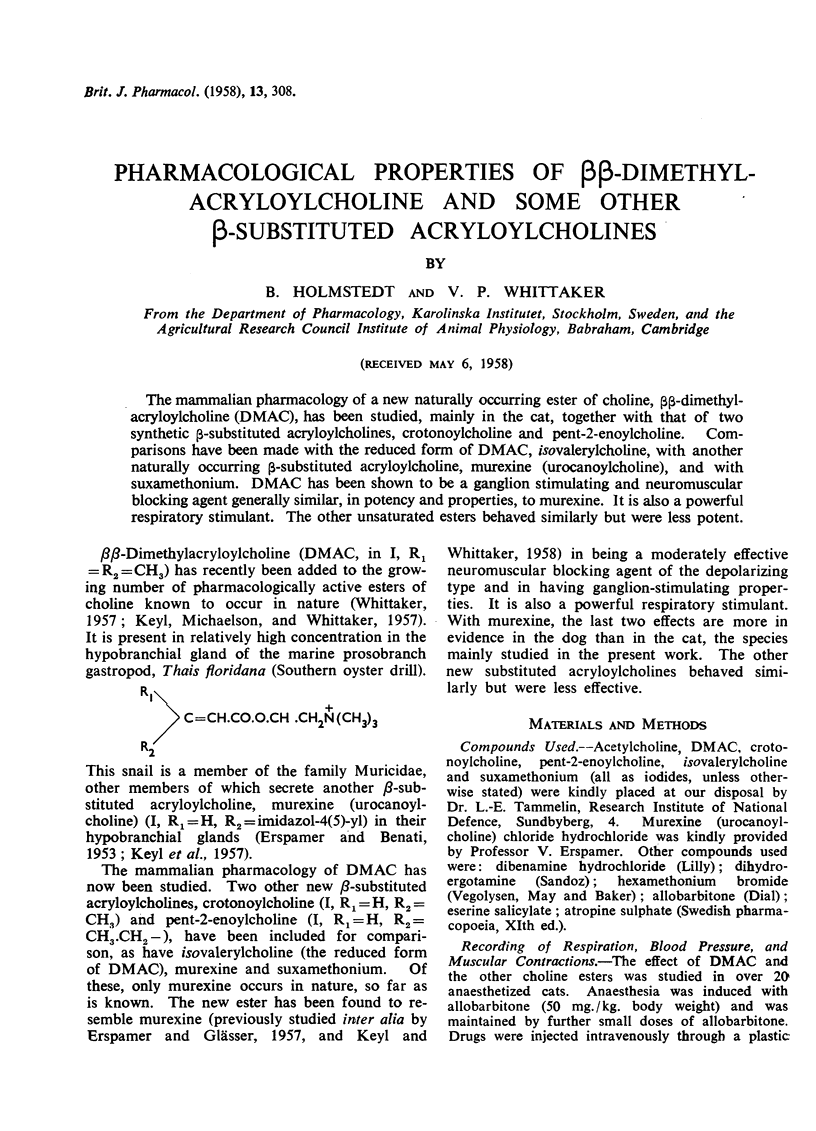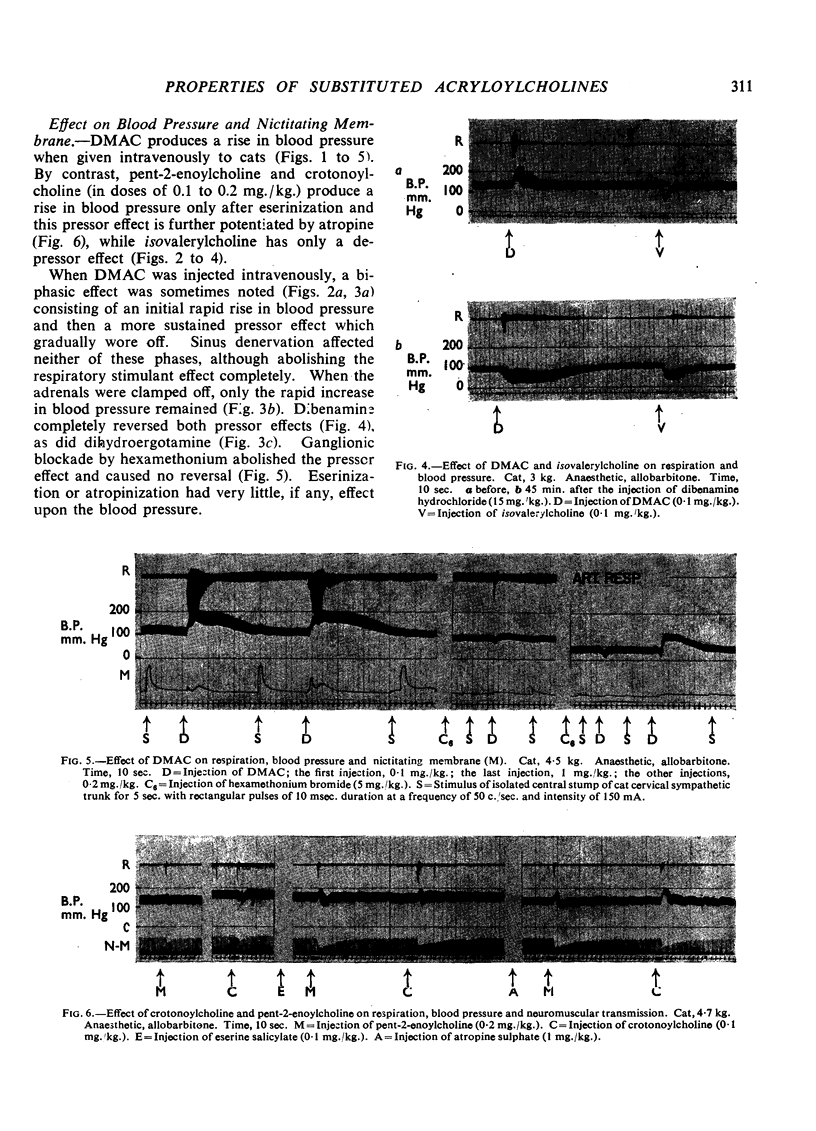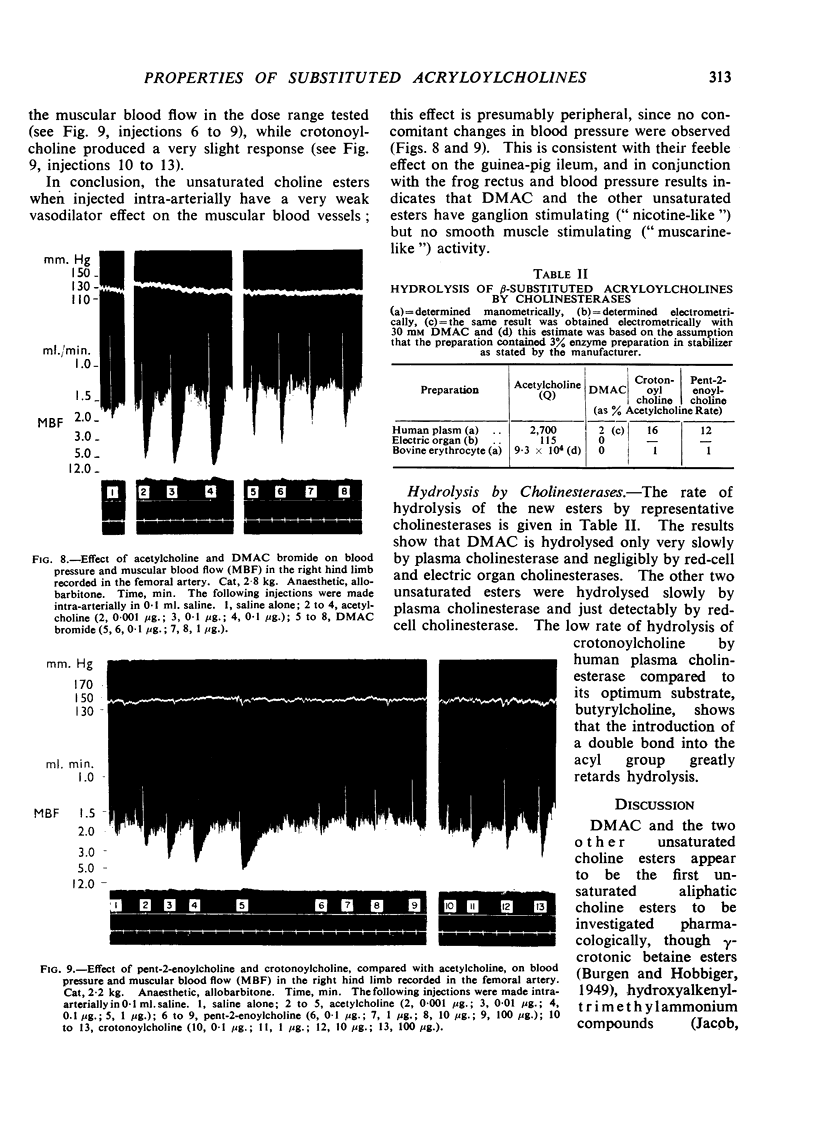Abstract
The mammalian pharmacology of a new naturally occurring ester of choline, ββ-dimethylacryloylcholine (DMAC), has been studied, mainly in the cat, together with that of two synthetic β-substituted acryloylcholines, crotonoylcholine and pent-2-enoylcholine. Comparisons have been made with the reduced form of DMAC, isovalerylcholine, with another naturally ocurring β-substituted acryloylcholine, murexine (urocanoylcholine), and with suxamethonium. DMAC has been shown to be a ganglion stimulating and neuromuscular blocking agent generally similar, in potency and properties, to murexine. It is also a powerful respiratory stimulant. The other unsaturated esters behaved similarly but were less potent.
Full text
PDF






Images in this article
Selected References
These references are in PubMed. This may not be the complete list of references from this article.
- Chang H. C., Gaddum J. H. Choline esters in tissue extracts. J Physiol. 1933 Oct 6;79(3):255–285. doi: 10.1113/jphysiol.1933.sp003049. [DOI] [PMC free article] [PubMed] [Google Scholar]
- DE BURGH DALY M. Acetylcholine and transmission at chemoreceptors. Pharmacol Rev. 1954 Mar;6(1):79–80. [PubMed] [Google Scholar]
- DEL CASTILLO L., KATZ B. A study of curare action with an electrical micromethod. Proc R Soc Lond B Biol Sci. 1957 May 7;146(924):339–356. doi: 10.1098/rspb.1957.0015. [DOI] [PubMed] [Google Scholar]
- HEYMANS C. Action of drugs on carotid body and sinus. Pharmacol Rev. 1955 Mar;7(1):119–142. [PubMed] [Google Scholar]
- JACOB J., MARSZAK I., BARDISA L., MARSZAK-FLEURY A., EPSZTEIN R. Relation entre la structure et les activités de divers composés saturés, éthyléniques et acétyléniques apparentés à la choline et à l'acétylcholine. Arch Int Pharmacodyn Ther. 1952 Sep 15;91(3-4):303–321. [PubMed] [Google Scholar]
- KEYL M. J., MICHAELSON I. A., WHITTAKER V. P. Physiologically active choline esters in certain marine gastropods and other invertebrates. J Physiol. 1957 Dec 31;139(3):434–454. doi: 10.1113/jphysiol.1957.sp005903. [DOI] [PMC free article] [PubMed] [Google Scholar]
- KEYL M. J., WHITTAKER V. P. Some pharmacological properties of murexine (urocanoylcholine). Br J Pharmacol Chemother. 1958 Mar;13(1):103–106. doi: 10.1111/j.1476-5381.1958.tb00200.x. [DOI] [PMC free article] [PubMed] [Google Scholar]
- LINDGREN P. An improved method for drop recording of arterial or venous blood flow. Acta Physiol Scand. 1958 Feb 10;42(1):5–11. doi: 10.1111/j.1748-1716.1958.tb01536.x. [DOI] [PubMed] [Google Scholar]
- TAMMELIN L. E. An electrometric method for the determination of cholinesterase activity. I. Apparatus and cholinesterase in human blood. Scand J Clin Lab Invest. 1953;5(3):267–270. doi: 10.3109/00365515309094195. [DOI] [PubMed] [Google Scholar]








